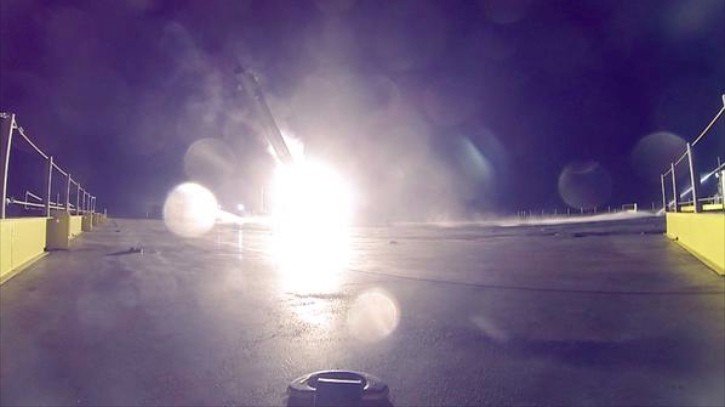When SpaceX launched its fifth official mission to resupply the International Space Station, last Saturday, everybody watched closely to see if Elon Musk’s plans on reusing the Falcon 9 works. Even though the rocket that put the cargo capsule en route failed to land safely, the mission was still quite successful. Tesla Motors’ CEO just released images taken from cameras onboard the drone ship to back up his theory.
So why do we care about some pictures showing a rocket crashing while some weird flames are surrounding it? Well, because it could make history. And not just any kind history, but a true land mark in humanity’s road to space travel. But let us expand.
You see, SpaceX is Elon Musk’s plan to make spaceflight dramatically cheaper. How? Well, reusing the rockets that send the cargo capsule to space, instead of crashing them with every trip. “Reusability is the critical breakthrough needed in rocketry to take things to the next level”, is what the inventor said back in October, during a talk at MIT.
Getting back to the nice little pictures Musk tweeted just now, they simply prove that the Falcon 9 rocket truly is reusable. The 14-story tall booster is seen hitting the deck of the barge at a 45-degree angle as the four stabilizing fins lose hydraulic power. The engines later try to restore balance but fail and the rocket smashes into the deck of the ship.
But this is in fact good news, since it confirms Elon’s earlier beliefs that the rocket landed hard because of the hydraulic fluid powering its four aerodynamic stabilizations fins ran out on final descent. Getting more fuel into its tanks is obviously a high school game compared to getting the rocket to land on a 300 feet by 100 feet target.
In other words, once again Musk is getting there first, only this time it’s in outer space.
PS: As to the actual cargo ship getting safely to the ISS, here's what NASA just wrote: "The hatches to Dragon were opened for business Tuesday morning at 3:23 a.m. EST and the crew began unpacking critical gear that will support 256 science experiments. The SpaceX commercial cargo craft was attached Monday to the Harmony module at 8:54 a.m."
You see, SpaceX is Elon Musk’s plan to make spaceflight dramatically cheaper. How? Well, reusing the rockets that send the cargo capsule to space, instead of crashing them with every trip. “Reusability is the critical breakthrough needed in rocketry to take things to the next level”, is what the inventor said back in October, during a talk at MIT.
SpaceX won the $2.6 billion contract from NASA
OK, but why do we care about Elon Musk’s space travel program? Because it's what NASA will use the next decades or so to transport its astronauts and cargo to space and back. After a pretty tight competition, NASA has decided that Boeing and SpaceX will be the companies to develop the agency’s future two-human spaceflight vehicles. It was last year, in September, they did the announcement which basically means the space program gets $2,6 billion to finish developing and fly the crew version of its Dragon cargo vehicle.Getting back to the nice little pictures Musk tweeted just now, they simply prove that the Falcon 9 rocket truly is reusable. The 14-story tall booster is seen hitting the deck of the barge at a 45-degree angle as the four stabilizing fins lose hydraulic power. The engines later try to restore balance but fail and the rocket smashes into the deck of the ship.
But this is in fact good news, since it confirms Elon’s earlier beliefs that the rocket landed hard because of the hydraulic fluid powering its four aerodynamic stabilizations fins ran out on final descent. Getting more fuel into its tanks is obviously a high school game compared to getting the rocket to land on a 300 feet by 100 feet target.
In other words, once again Musk is getting there first, only this time it’s in outer space.
PS: As to the actual cargo ship getting safely to the ISS, here's what NASA just wrote: "The hatches to Dragon were opened for business Tuesday morning at 3:23 a.m. EST and the crew began unpacking critical gear that will support 256 science experiments. The SpaceX commercial cargo craft was attached Monday to the Harmony module at 8:54 a.m."









